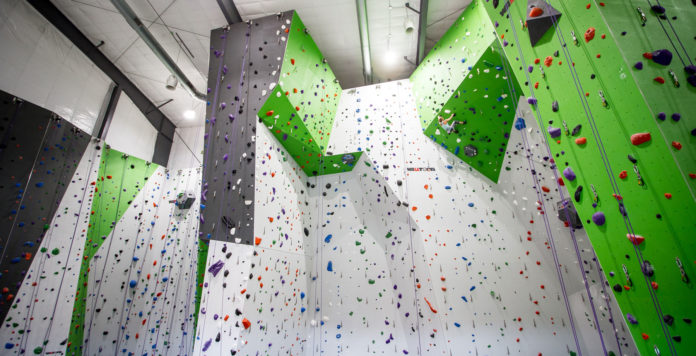
A look at some protocols and strategies being rolled out by gyms that are allowing customers to climb again as the Coronavirus (COVID-19) pandemic continues.
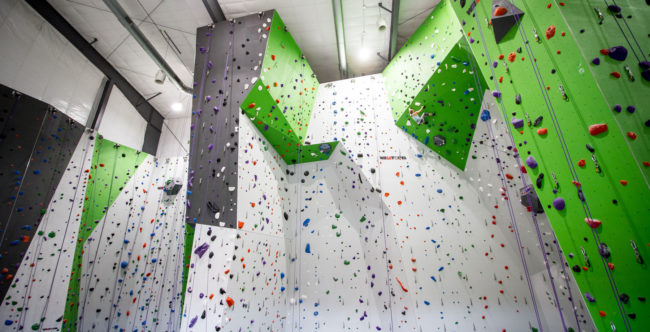
By John Burgman
A few weeks ago, most of the news in the industry was about gym closures, particularly as self-isolation orders and mandates that limited operations at non-essential businesses became the norm in the United States and Canada. However, in the past week or so, the focus has largely shifted from climbing gyms’ prolonged closures to their active reopenings. There are a number of reasons for this collective change in industry dialogue, including a three-phase federal plan for American businesses that was announced last month; the reopening of a handful of climbing gyms at the beginning of this month; and increasing segments of the population getting fed up with the idea of remaining sequestered and isolated for much longer.
Whatever one cites as the reasons for this thematic shift—and regardless of whether one deems climbing gyms reopening as wise or dangerous—the reality is that a number of gyms are opening, customers are climbing, and practically every facility is having to revamp various policies to mitigate ongoing risks related to the Coronavirus.
Of course, risk management is not a foreign concept to climbing gyms. This is evidenced by waivers, belay checks, floor padding, and many other operational guidelines that are considered standard at this point. In many ways, the industry already has the discipline and tools to minimize dangers and implement new policies in the face of this virus.
Some gyms that have reopened—such as Adrenaline Climbing in Suwanee, Georgia, and Onsight Climbing in Knoxville, Tennessee—are currently requiring face masks be worn by anyone who enters the building (“If you cannot or refuse to climb in a mask you will not be allowed to climb”). Other gyms are requiring that everyone wash their hands upon entering the facility. Adrenaline is even making mandatory the removal of street shoes before entering. For all gyms and all climbers, this is an adjustment period with new specifications and stipulations.
Here’s a closer look at some changes that gyms are making to various aspects of their operations—and how those changes might impact the customer experience.
Encouraging Social Distancing
One of the first gyms in the country to reopen was Treadstone Climbing in Columbus, Georgia. To prepare for the reopening, in a notice on its website Treadstone announced that it’s facility would start with a “soft opening” limited to just 20 customers climbing in the facility at any one time. Although the plan all along was to increase that number to 50 people in the days that followed, the initial announcement nonetheless indicated that Treadstone would be keeping close track of—and limiting—the total number of customers going forward.
Since that soft reopening, the routesetting at Treadstone has been done in a way that encourages social distancing too, with routes and boulders separated by significant blank wall space. Several other recently-reopened gyms have also set routes farther apart as a mitigation strategy.
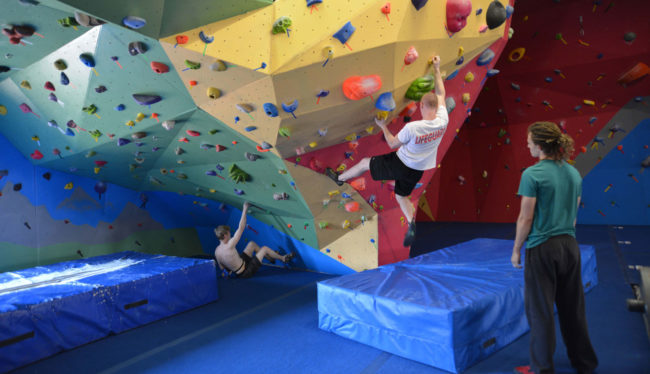
Onsight Climbing in Tennessee began a phased reopening on May 1, which coincided with “Phase 1 requirements” of that city. Upon reopening, the gym advised climbers to maintain a six-foot radial zone of personal space (aside from necessary proximity to one’s climbing partner) at all times. To better control customer numbers in general, Onsight only opened to members and punch-card users (i.e. no guest pass patrons allowed) and limited its capacity to 50 customers at any given time. Onsight’s website currently features a reservation system, whereby customers can purchase two-hour slots of climbing time in accordance with the occupancy limit. It is worth noting that parents and legal guardians of minors still count toward that gym’s customer numbers, even if those parents or legal guardians choose not to climb.
“The reservation system makes it super easy for folks to check how many people may be in during a specific time,” says Mackenzie Wilder, Program Manager and Marketing Director at Onsight. “The reservation slots have also been super helpful for scheduling staffing as we can schedule based on the more popular times.” So far the gym has not had to actively “enforce” the two-hour time slots, according to Wilder, because people typically either climb less or leave early; if any climbers want to stay beyond the two-hour slot, they must check with the front desk to make sure the facility has available slots.
Climb Tulsa and Threshold Climbing in Oklahoma, Clarksville Climbing and The Crag in Tennessee, and Escalade in Kennesaw, Georgia, are among other recently reopened gyms that are utilizing a reservation system. Escalade’s reservation system is separated to include family-only time slots, adult-only time slots, and general weekend time slots. Team practice time slots will likely appear in the future too.
Maintaining Facility Cleanliness
The sharing of routes at any gym will pose some risks that cannot be entirely eliminated. However, many gyms that have reopened have taken an indirect approach: Handholds, footholds and ropes will be cleaner because customers’ hands and feet will be cleaner.
To that point, some gyms that have reopened have made hand sanitizer readily available. Beyond that, for instance, Treadstone’s guidelines for reopening note, “All will be required to blot the soles of their street shoes in bleach water at check in.” Treadstone has also been bleaching its mats a number of times throughout the day since reopening.
Marc Heileman, the Owner of Treadstone, feels that there is not any way to completely disinfect holds while they are on the wall—or ropes, for that matter. Heileman says that screening participants, enforcing hand washing, and encouraging social distancing will be more effective than any attempts to disinfect shared fricative surfaces like holds.
Treadstone’s staff makes a point to remind people about washing hands after a climb and before touching their face. “We are helping folks maintain an awareness of how to direct a sneeze or a cough or a forceful exhale,” Heileman says. “I think everyone already has an awareness of this too, more so than ever before. I think people with symptoms or high risk profiles are staying home.”
Onsight has so far not taken any specific “extreme” mitigation measures to clean holds or ropes, according to Wilder. But that gym is retailing face masks and requiring all who enter the building to complete a set of screening questions related to symptoms. Additionally, some gyms that have reopened are discouraging members from shaking hands, high-fiving, and doing hands-on belay buddy checks. Onsight is recommending that customers climb with just one partner throughout the day, as a way of limiting direct contact with multiple climbers.
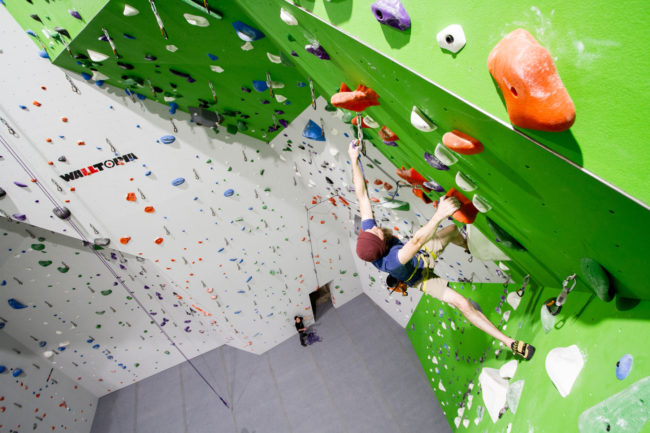
Discouraging Gear Rental
Closely related to the potential spread of the virus on holds, ropes and mats is the virus’ potential spread via rental equipment. To combat this, some gyms that are currently open will not allow rental equipment to be distributed or used at all.
One of the most logical ways for a gym to smoothly prohibit gear rental without ruining anyone’s climbing plans is to open solely to members, as longtime members are the customers who are most likely to already own gear.
“Regarding rental gear, we are initially opening up exclusively to members, so we anticipate a low usage on rental gear,” affirms Newton Dominey, Owner of The Crag in Franklin, Tennessee. (Note: The Crag also has a facility in Nashville, but the Nashville location remains closed because it is in a different county with different regulations). “That said, we will be disinfecting shoes, and rotating harnesses in and out of service with 24 hours between rental, based on what we’ve seen about the virus’ ‘longevity’ on soft goods,” notes Dominey.
Mackenzie Wilder at Onsight in Knoxville says the facility being accessible to members only for the time being has been beneficial, on the whole: “The members are all super respectful of everyone’s space, time climbing, wearing masks, etc,” Wilder notes.
Clarksville Climbing, as another example, is open but not currently allowing chalk bag rentals—but is still renting shoes and spraying them with disinfectant after every use.
As more facilities reopen in the coming weeks, many will likely be scrupulous in making sure their front desks and gear shops are well-stocked with chalk bags, shoes and harnesses as a way of encouraging people to purchase items instead of renting. Threshold Climbing in Oklahoma City has already opened its gear shop, but with a requirement that any patron wear a mask when arriving at the gym.
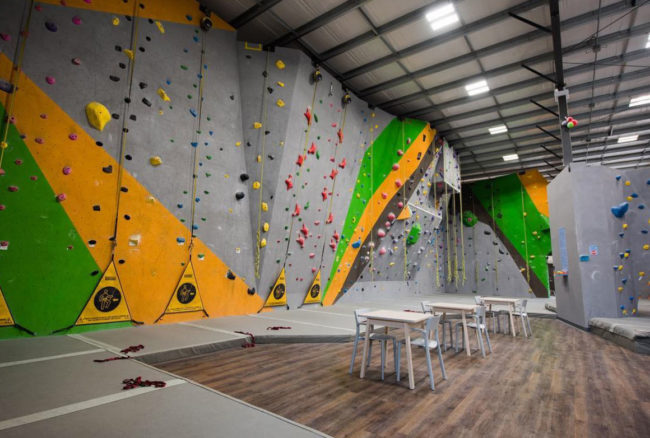
Keeping a Regional Focus
The extent and impacts of this pandemic have varied across localities from day one. This has made it challenging for governments and trade groups to come up with any “one size fits all” guidance. As such, any decisions about reopening climbing gyms, and also specific mitigation efforts for climbing gyms, has largely been—and will likely continue to be—similarly focused on happenings at the local and regional level.
At the risk of editorializing, we at CBJ encourage every climbing gym operator to―in addition to staying up to date on the latest industry resources and guidelines―reach out to other gym operators nearby. Thus far in Colorado and Utah, such inter-gym communication has generally been embraced positively. While gyms will likely not agree on all measures, those within a given region can find strength in banding together with a basic level of coordination.
CBJ will continue to provide updates related to gym reopenings as they happen around North America.

John Burgman is the author of High Drama, a book that chronicles the history of American competition climbing. He is a Fulbright journalism grant recipient and a former magazine editor. He holds a master’s degree from New York University and bachelor’s degree from Miami University. In addition to writing, he coaches a youth bouldering team. Follow him on Twitter @John_Burgman and Instagram @jbclimbs. Read our interview Meet John Burgman, U.S. Comp Climbing’s Top Journalist.









